The war on dehydration is a commercially burgeoning marketplace. An increasingly sophisticated consumer population hoping to conquer everything from 26-mile marathons to vodka shots is deconstructing every functional remedy in the fight to quell the effects of severe dehydration.
A smart customer is no longer satisfied with Gatorade's sugary sweet, 50-year-old science. New technologies and guidelines created a new approach to hydration that's quicker, more effective, and better for you: Powdered products that, when mixed with water, aim to meet the oral rehydration salts guidelines provided by the World Health Organization (WHO).
These powdered substances include products like DripDrop, Liquid IV, and Banana Bag. These newcomers have entered an already crowded field of dehydration remedies, but they've come with some substantial research backing them.
So, what is the best way to hydrate? If you are not planning to stick an IV infusion (aka IV drip) in your veins, we've crunched the data and found that the Banana Bag Oral Solution is the best option — it meets the WHO's guidelines, without added sugars, artificial sweeteners, flavors, or colors.
Next time you're looking for hydration, whether it's to cure a hangover or recover from a training session, skip the sugar-filled and fake-colored Gatorade and grab a Banana Bag.
Importance of Hydration
Water is crucial to health. We all know that water makes up 55–65% of our bodies, but its role in the body is so much bigger than that. It ensures our cells and organs can communicate; helps move nutrients into our blood when we're digesting food; helps our livers remove toxins; helps us breathe; cushions our organs and joints; helps our heart beat regularly; and keeps our bodies at an optimal temperature.
Our body thrives when it has an adequate water supply, but also, when it's got the right balance of salts and sugars in our blood — too much or too little of any of these and we're likely to be left feeling woozy or lightheaded and sleepy. Proper hydration helps keep your heart rate, fatigue levels, and digestion regular after intensive exercise (or intensive drinking, if that's your jam).
Research has linked chronic dehydration to formation of kidney stones. Research also suggests that drinking enough water can help some people eat less and avoid overeating.
How you hydrate is important, though. Drink just water, and you could send your electrolytes out of whack — especially after an intense exercise session. Drink too much of a sugary solution your body may even lose water, dehydrating you further. Drinking too much water, or overhydration, can even be deadly, since the water flushes electrolytes like salt and sugar from your body, resulting in a syndrome called hyponatremia, meaning "insufficient salt in the blood."
IV Drip History
Knowing how important hydration is, you may be thinking you'll need to see a doctor and get an IV the next time you're active on a hot day. IVs are typically bags of a water, salt, and sugar solution injected through a vein in the arm. Hospitals use IV rehydration bags of saline to treat patients, but their uses don't stop there.
EMTs administer these simple IVs to depleted New York City marathon runners. Firefighters administer them to each other during severe firefighting sessions in Northern California. National Geographic photographers in the Sahara inject after overexposure to the elements. Patients suffering from chronic illnesses travel back to the hospital for IVs. Army medics administer them in battle situations in the Middle East.
It's even become trendy for partiers and extreme athletes to depend on IV rehydration — literally sticking a bag of saline into your arm to hydrate. Hydration-based IV drips have become so popular in the past decade that they have migrated to retail locations: Hungover revelers can order drips in Las Vegas from a mobile trailer or their hotel room, at a cost ranging from $159 to $300. These IV stations are popping up all over the country.
While IVs have been the best option for rehydration for decades, there's plenty of evidence that you don't need a needle to hydrate, and it may not be the best choice for many. There is a good deal of debate about the necessity and safety of healing dehydration intravenously, instead of orally, due to concerns about infection, cost, and allergic reactions.
Because IVs require administration by medical professionals and antiseptic conditions, they're expensive and, medically speaking, designed for patients with deteriorating motor skills and swallowing abilities. Some hydration clinics, places like Hangover Heaven, are in the second position to emergency rooms and concerned that IV fluid bags could be in limited supply, increasing their price.
For dehydration patients who can swallow (and excluding true medical emergency situations like cholera or C. difficile), many can be treated with over-the-counter drinks created using oral rehydration salts that adhere to the WHO's standards. Research has shown that IV hydration isn't better than oral options in most cases. And the WHO guidelines indicate that oral solutions tailored to bring more water into the body can replace almost 33% of intravenous hydration. It's turning out, the "fix" for hydration just might be doable without the needle.
Enter, Modern Science
So what are the non-invasive alternatives? Somewhat surprisingly, the first task is actually to dismiss the brands you know. For decades, Pedialyte and Gatorade have targeted the dehydration market. Recently, Abbott Laboratories has spent heavily to market Pedialyte as a salve for hangover symptoms resulting from severe dehydration.
However, the generous sugar content, artificial ingredients, dyes, and lack of vitamin supplementation in these oral solutions make any comparison to IV rehydration unserious. Pedialyte and Gatorade were the best in breed once upon a time, but researchers formulated these drinks when Richard Nixon was the President. While the fundamental formulation of the intravenous drip has achieved an orthodoxy over time, our most recognized over-the-counter dehydration beverages are relics from an era that poorly understood the impact of excess sugars. Pedialyte and Gatorade, the historic go-to hydration products, fall short of the new WHO standards for oral rehydration.
WHO standards for oral rehydration delineate correct balance of salts and sugars, which helps the body absorb water at a much more efficient rate, actually decreasing the need for IV hydration or replacing it all together in mild cases. Figuring out the balance of salts and sugars that best helps the body transport water in from the gut at its most efficient rate and adjusts for the different intestinal absorption rates is the central challenge of devising a credible over-the-counter drinkable alternative to the IV drip.
So, the best way to hydrate is with a solution that contains both salts and small amounts of sugars in water to both bring more water into the body and to ensure that the body doesn't become hyponatremic while hydrating. This balance is what these new oral rehydration salts are aiming for when they're creating their formulas.
For the record, what is the optimal amount of sugar? The answer turns out to be a little, but not too much and relative to the level of sodium in the solution. It comes down to having the right balance of sodium and dextrose, a simple sugar that's called glucose when it's in a water solution, as it is in the body. Glucose in the gut activates the sodium-glucose transport system, which shuttles both glucose and sodium into the bloodstream. Once sodium crosses into the blood, water follows. It's that simple.
But too much sugar can dehydrate, as the body pulls water from the blood into the gut to dilute the too-sugary mix inside. For those who prioritize taste over science, the amount of sugar necessary to make a drink taste sweet is so high that it would quickly fail when stacked up against WHO's guidelines. Similarly, the optimal sodium concentration would be higher than what mainstream sports drink consumers might accept. Meaning, the optimal WHO compliant formulation will taste like, ummm … salty medicine.
The WHO's oral rehydration salts guidelines set out the requirements for a new breed of purpose-made oral solutions that can emulate the rehydrating elements of an IV. In the past ten years, a handful of functional products have been engineered to meet these standards, but they're not all created equal.
So, How Should We Hydrate?
After reviewing dozens of new products, we've whittled down the field by comparing the two brands you know (Pedialyte and Gatorade), and three new, intriguing brands of oral rehydration solution.
We've compared below how these five different products stack up to the improved WHO guidelines for a lower salt and low sugar oral rehydration solution. In order to show the sodium-to-glucose ratio for each product, we used the minimum amount of water necessary (but no less than 250 ml) for one serving size for each and compared these numbers to the WHO guidelines.
To get into the nitty-gritty, the WHO guidelines recommend a solution with sodium in the range of 60–90 molar equivalents per liter and glucose in the range of 60–111 millimoles per liter. Conforming to these guidelines requires measuring both relative (sodium to dextrose ratio) and absolute (total osmolarity) amounts of salt and sugars. The relative ratio should have sodium and dextrose in similar concentrations, though total dextrose should not exceed 111 millimoles.
We calculated the osmolarity of these solutions from the sugars listed on their nutrition facts, but as some of them have added sugars that are not metabolized into glucose, those numbers may not accurately represent their dextrose osmolarity.
That same problem impacts the added sugars in some of these brands. We can't be sure of the final glucose concentrations for Gatorade, DripDrop, and Liquid IV since they've added other types of sugars, which may break down into additional glucose.
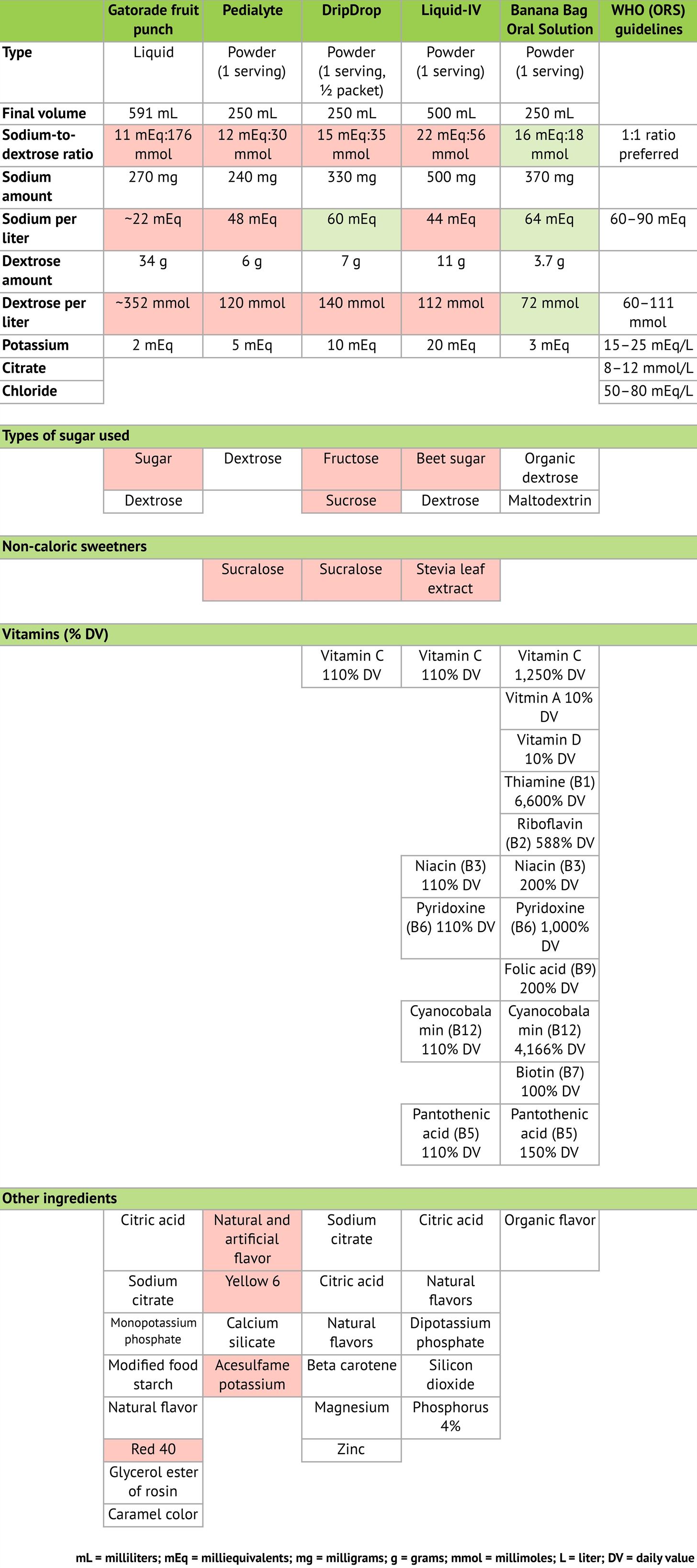
In the chart above we highlighted in red the dextrose and sodium concentrations that don't meet the WHO guidelines. You can see many of these oral solutions have way too much sugar and way too little salt. We've also noted in red the added sweeteners, flavoring, and coloring, as some people prefer to avoid these, and added sweeteners confuse the final glucose osmolarity in the solution.
Drip Drop
The Drip Drop product has a disproportionate balance of sugar, from a mix of fructose, sucrose, sucralose, and dextrose, to make it taste sweet. The ratio of sodium to dextrose is sub-optimal when compared to the WHO guidelines, relative to Liquid IV and Banana Bag. Conceptually, consider this product to be a theme and variation of Pedialyte. It passes the WHO oral rehydration salts test by one criterion (sodium molar equivalents per liter) but misses by another (the sodium-to-dextrose ratio).
Liquid IV
Liquid IV's product meets the WHO guidelines, but is just a bit low on sodium, therefore falling on the sub-optimal side of the recommended range of sodium-to-dextrose. The critical ratio, again being sodium-to-dextrose, is off target.
Their solution also contains some vitamins, and Liquid IV claims to restore normal blood levels of vitamins, but adequate blood levels will be difficult to achieve given not all of the vitamins we ingest orally make it into the blood.
Consider B12, for example — the gut only absorbs about ten micrograms out of a large 500 microgram dose. Therefore, a 110% daily value of B12 taken orally translates to only 2.2% of the recommended daily dose making it into the bloodstream.
While including vitamins in these solutions is good, and the salt and sugar ratios are close to the WHO guidelines, Liquid IV doesn't take that far enough to actually impact vitamin levels in a patient.
Banana Bag Oral Solution
The Banana Bag Oral Solution gets its name from the emergency room vernacular banana bag, the yellow colored IV drip formulated for severely dehydrated and often inebriated patients.
Banana Bag Oral Solution meets the WHO guidelines in regards to sodium-to-dextrose ratio and the overall goal of low osmolarity. Among the formulations compared, the Banana Bag Oral Solution best replicates the WHO's oral rehydration salts formulation. Meaning, it seeks to replace the IV infusion bag for rehydration in patients with full motor skills.
Each packet contains the same vitamins included in a banana bag IV drip: B-Vitamins along with Vitamin A, C, and D. They're added at comparatively higher doses, to compensate for lower absorption rates through oral ingestion.
With its ratio of sodium to dextrose and lack of added artificial and natural sweeteners, this product is less "tasty" than all the others. But the robust dose of vitamins and electrolytes is unique among the formulations tested. If you champion the formulation and effect of the emergency room IV infusion (and don't mind the taste), this is the obvious choice for hydrating without extra sugars and calories.
So, What's the Best Way to Hydrate?
Many new hydration products enter the market every year. A combination of scientific advances and widely recognized WHO guidelines for oral hydration means that the IV drip may soon be "one alternative" for dehydrated patients whose motor skills allow them to swallow a drink.
For those looking for a quick fix after a long run, or a long-running bender, instead of grabbing for a Gatorade or other sweetened drink, hydrate with the scientific solution. While they may not be the sweetest drink on the block, they'll get you hydrated in no time — without needing to hit up your local IV dispensary.
Just updated your iPhone? You'll find new emoji, enhanced security, podcast transcripts, Apple Cash virtual numbers, and other useful features. There are even new additions hidden within Safari. Find out what's new and changed on your iPhone with the iOS 17.4 update.
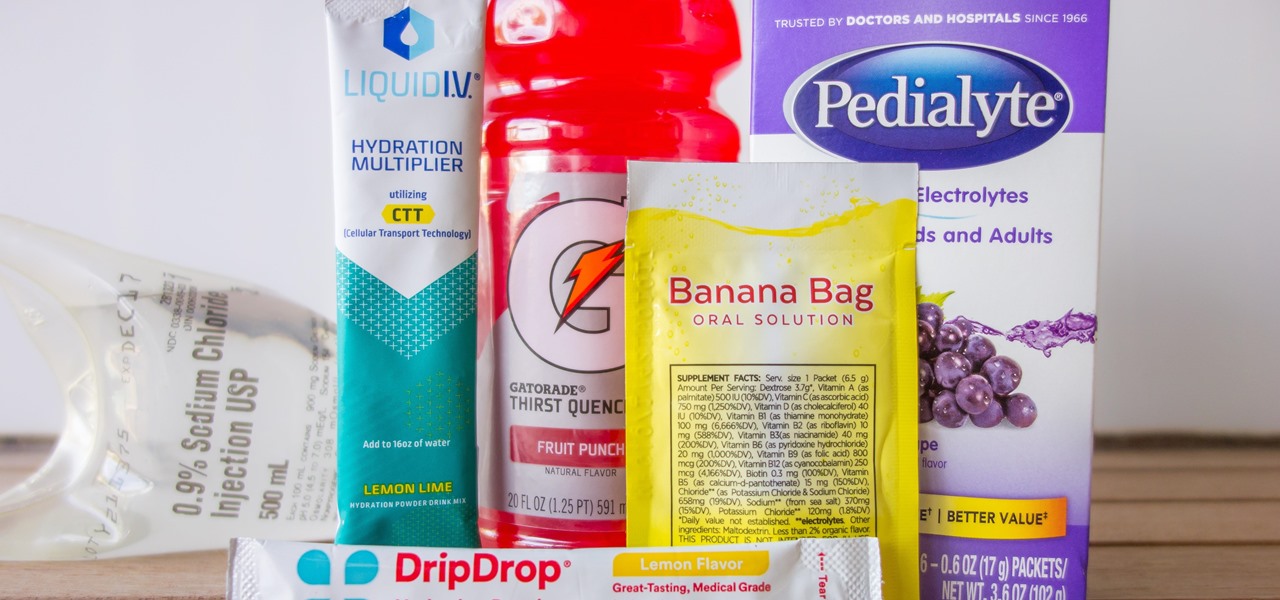


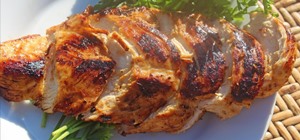



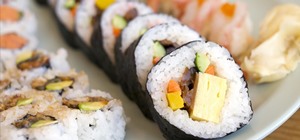
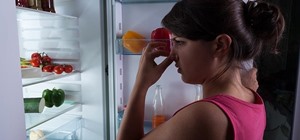
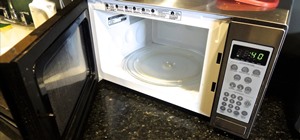
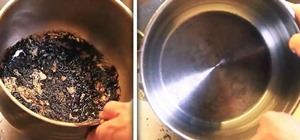
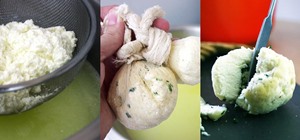
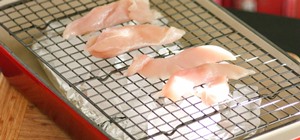
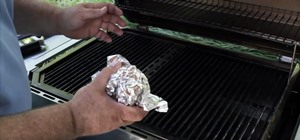
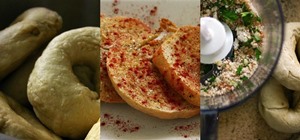
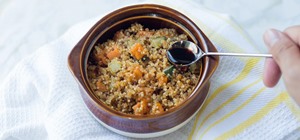
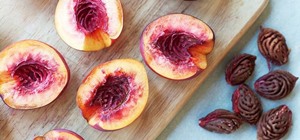
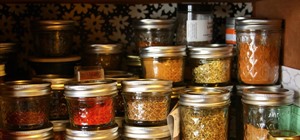
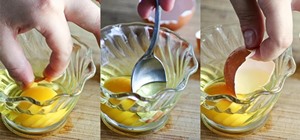




Be the First to Comment
Share Your Thoughts